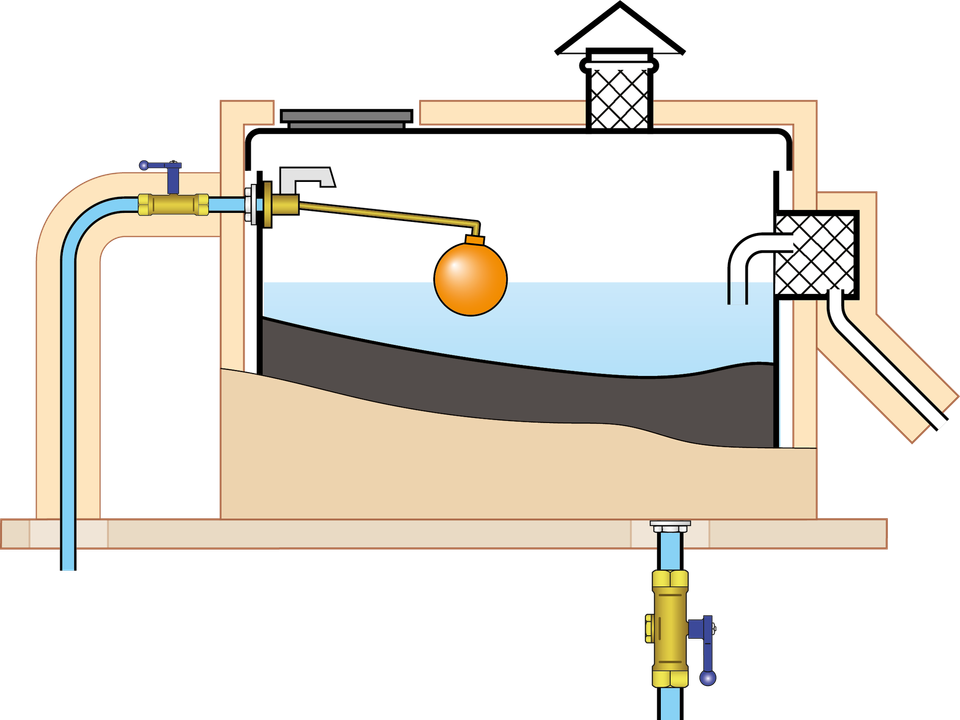 If a premises has any form of mains water supply, then the water fittings regulations in England, Wales and Northern Ireland, byelaws in Scotland, apply.
If a premises has any form of mains water supply, then the water fittings regulations in England, Wales and Northern Ireland, byelaws in Scotland, apply.
These legal requirements play an important role in protecting public health and safeguarding water supplies. Their purpose includes preventing the contamination and waste of water supplied by a water undertaker once it has entered a customer’s plumbing system.
A cold water storage cistern may be installed for various reasons including:
To provide backflow protection
To provide a reserve supply in the event of any disruption to the incoming cold water supply
To reduce the maximum demand on the cold water supply
To reduce the supply pressure
In many cases the local water undertaker will need to be given advanced notice of the proposed installation of any cold water cistern. This is an important simple and essential check to minimise the risk to water supplies.
Please be aware as well as providing storage a cold water storage cistern may be providing backflow protection for installations downstream. For this reason, they should not be removed without firstly consulting with the local water undertaker.
Even if a cold water storage cistern is to be used solely for storing water for drinking, washing, bathing or other purposes requiring it to be wholesome, as a condition of consent it is likely the local water supplier will require backflow protection to be installed. This is typically achieved by suitable air gap arrangement; in some circumstances a double check valve may also be required.

Regulation 4 England & Wales
Regulation 4 Northern Ireland
Byelaw 4 Scotland
Regulation 5 England & Wales
Regulation 5 Northern Ireland
Byelaw 5 Scotland
Schedule 2 paragraph 2
Schedule 2 paragraph 3
Schedule 2 paragraph 4
Schedule 2 paragraph 5
Schedule 2 paragraph 6
Schedule 2 paragraph 7
Schedule 2 paragraph 8
Schedule 2 paragraph 9
Schedule 2 paragraph 10
Schedule 2 paragraph 11
Schedule 2 paragraph 14
Schedule 2 paragraph 15
Schedule 2 paragraph 16
Schedule 2 paragraph 20
Schedule 2 paragraph 27

Regulation 5 England & Wales
Regulation 5 Northern Ireland
Byelaw 5 Scotland
Schedule 2 paragraph 2
Schedule 2 paragraph 3
Schedule 2 paragraph 4
Schedule 2 paragraph 7
Schedule 2 paragraph 8
Schedule 2 paragraph 9
Schedule 2 paragraph 11
Schedule 2 paragraph 14
Schedule 2 paragraph 15
Schedule 2 paragraph 16
Schedule 2 paragraph 20
Schedule 2 paragraph 27

Cisterns storing drinking water
Installing cold water storage
Keeping a cold water storage cistern safe
Linking cold water storage cisterns
Pipe identification information note
Plumbing maintenance: at home
Plumbing maintenance: commercial premises
Underground storage
Regulators' Specification for backflow
Full list of Publications
We use cookies to give you the best possible experience with Water Regs UK. Some are essential to provide website functions and ensure the website is secure. We also use cookies to help us understand how people use the site and to make improvements. Click "Accept All" to enable recommended settings or click "Manage cookies" to adjust your settings. For more details, see our Cookie Policy.